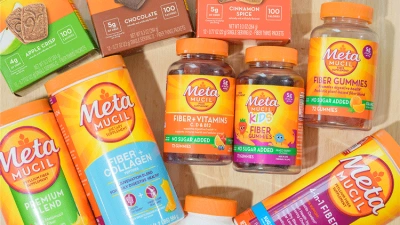Meeting the recommended daily fiber intake does not have to be complicated. You don't need a complete diet overhaul; a few simple changes may be enough to increase the amount of fiber you eat each day. Keep reading for simple ways to get more fiber in your diet.
Add fruits and vegetables to every meal
Regardless of what your current diet looks like, commit to upping your fruit and vegetable intake with your breakfast, lunch, snacks, and dinner. So, for instance, if your typical breakfast is a bowl of cereal, add a cup of fresh raspberries to get an additional 8 grams of fiber.4
For snack, try broccoli and a banana. A cup of broccoli provides about 2 grams of fiber, and a banana about another 2 grams of fiber.4 As you can see, increasing your fiber consumption is not difficult or time-consuming. You can chop the fruits and veggies in few minutes and eat them on the go.
Take a fiber supplement
Eating more plant-based foods is a great way to get more fiber plus the other nutrients your body needs. But it’s challenging to get enough to reach the 28g needed daily. So, as you add more fruits and vegetables, nuts, and seeds to your diet, supplement with Metamucil made with plant-based psyllium fiber. Metamucil Orange Smooth Sugar-Free Powder provides 3 grams of fiber per serving, about 10 percent of your recommended daily fiber intake. Add a rounded teaspoon of Metamucil Orange Smooth Powder to a glass of water and start your day on the right note by increasing your fiber intake.
Metamucil Fiber Gummies are an excellent option if you prefer taking supplements in gummy form. These orange-flavored fiber supplement gummies contain a prebiotic, plant-based fiber blend to support your digestive health* and 5 grams of fiber per serving with no added sugar.
Start your day with a tropical fruit smoothie
No matter how little time you have in the morning, in less than 5 minutes, you can make a delicious, nutrient-packed, fiber-rich smoothie. Here’s a tropical fruit smoothie recipe:
Add ½ cup vanilla low-fat yogurt, ½ medium peeled banana, 1/3 cup mango or papaya juice, 1 serving of Metamucil Orange Smooth Powder, and crushed or cubed ice. Blend and add ice until you reach your desired consistency.
With 5 grams of fiber, this smoothie is a great and tasty breakfast for anyone looking to up their fiber intake.
Snack on Metamucil Fiber Thins
Make the most of your afternoon snack by treating yourself with Metamucil Chocolate Fiber Thins. One serving contains 5 grams of fiber and only 100 calories. Not a fan of chocolate flavor? Try Metamucil Cinnamon Spice Fiber Thins, or Metamucil Apple Crisp Fiber Thins instead.
Eat a handful of nuts and seeds
Sunflower and pumpkin seeds make an excellent addition to any salad. With their unique nutritional profile, crunchy texture, and generous fiber content, they deserve a spot on your plate. Be mindful, however, that nuts are relatively high in calories, so don't go overboard.
How much fiber do nuts and seeds provide?4
- 1 cup of whole almonds has almost 18g of fiber
- 1 cup of chopped walnuts has about 8g of fiber
- 1 cup of halved pecans has almost 10g of fiber
- 1 oz of chia seeds has almost 10g of fiber
There are so many ways to up your fiber intake, many of which require little to no time commitment. Whether you start by adding a piece of fruit to your meals, snack on Metamucil Fiber Thins, or sprinkle almonds on your salad, you will be sure to reap the benefits of getting more fiber in your diet.
